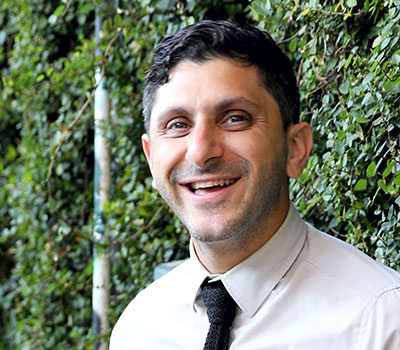In the four years since Noah Singerman moved to Charleston, South Carolina, he’s watched the city’s wine community take off. He credits new stores and wine bars like Vintage Lounge and Graft, which have created more spaces for people to gather around wine, and drawn a wider variety of bottles to the market. Singerman says he’s benefitted, too: At Leon’s, he’s finding plenty of calls for grower Champagne and even pét-nat.


Has the Charleston wine scene changed a lot since you arrived there?
I moved here over four years ago, and there were no retail shops downtown; there was only one quality wine bar. That next level of more casual restaurants still had pretty bad wine lists. Starting in 2018, a couple of wine shops and a couple of wine bars opened up. I’m always amazed at how packed Vintage Lounge and Graft are; Monarch is also doing great. Wine has become part of the community. Now you see people on Instagram posting “I’m going to Graft.” Wine is more talked about as a normal, everyday social activity. Now we have better distributors bringing in better wines, too. Even the corner-shop restaurants have great wine lists, diving deep into Rosenthal or Theise’s direct-import offerings. You see the list and you know that this isn’t just “a rep told me what to buy.”
Sparkling wine sales were incredibly strong for you this year, making up 30 percent of sales. And literally half of the wines on your Top 10 list are bubbly. How do your guests seem to navigate through those wines, from Cava to sparking Bourgogne to grower Champagne?
The [most popular] one will always be the least expensive; that’s the default. People will come in and just say, “I’ll have a glass of sparkling.” If it said Prosecco; that would be the one that would sell. [In this case, the Dibon Cava was the least expensive and best-selling sparkler.] After that, it becomes interesting. We have sort of trained our staff to strategically tell people that for a little bit more money, they can get a vastly better wine. You can now get great true grower Champagne for $64—producers like Pierre Paillard and Aubry—and anything under $80 moves well.
The Piuze Val de Mer [Bourgogne Brut Nature Rosé] sells in part because it’s rosé and also because it’s available by the glass. The person looking at the Cava says: Well, for little more—plus the popularity of rosé—I’ll go for that.
We also do well with pét-nats in general. I’m pretty sure people aren’t walking in asking, “Where’s your pét-nat section?” But they may look at the Champagne list, and decide they don’t necessarily want to spend that much. The cost-conscious guests say: Okay, Leon’s is known for Champagne, but I want to spend $50. That’s also how they end up at Cava, or Huet Vouvray.
How do two reds end up on the best-selling list of a seafood joint?
Everything on the menu is either seafood or chicken, and we have ton of cayenne in our fried chicken; all these things scream lighter-bodied red wines or white or sparkling. During staff education we talk about pairings; the point of this wine list is nothing will be unpairable if you put raw oysters aside. The Raúl Pérez Bierzo Ultreia St. Jacques is our “full bodied” red—Charleston is hot most of year, and you don’t need Napa cab with your oysters. So this, coming from white wine region, drinks very minerally, yet has a lot of structure to it, so it satisfies someone looking for that richer reds. The Luigi Giordano Langhe Rosso nebbiolo: It’s approachable and it’s the least expensive wine by the glass. Price is often a big factor; maybe they are looking at pinot and want to save the money.
is W&S’s editor at large and covers the wines of the Mediterranean and Central and Eastern Europe for the magazine.
This is a W&S web exclusive. Get access to all of our feature stories by signing up today.
















